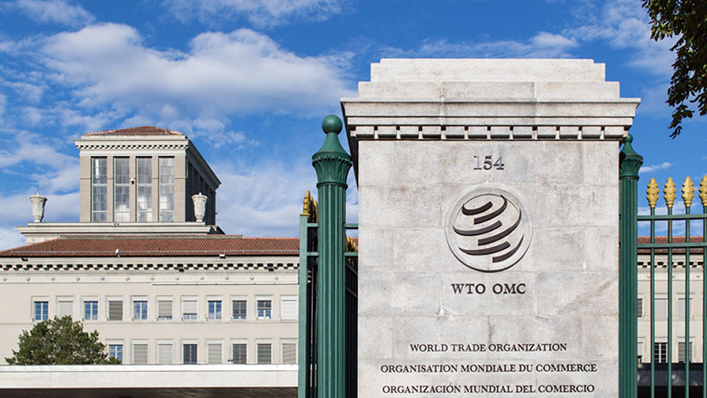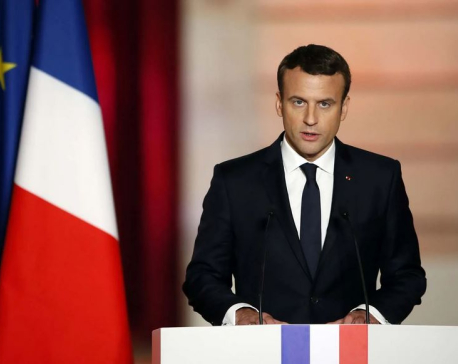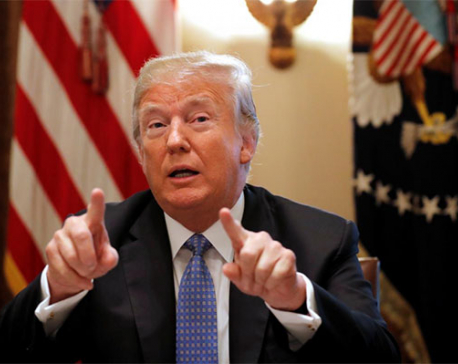
OR
WTO sees 'subpar' 2023 global trade growth
Published On: April 6, 2023 08:00 AM NPT By: Republica | @RepublicaNepal

GENEVA, April 6: The World Trade Organization said Wednesday that 2023 global trade growth would be slightly better than feared, but would remain "subpar", weighed down by the Ukraine war and stubbornly high inflation.
Presenting their annual trade forecast, WTO economists said they expected to see the volume of global merchandise trade slow to 1.7 percent this year -- a full percentage point lower than in 2022.
That forecast was slightly better than feared last October, when the WTO projected 2023 trade growth would be as low as one percent, but a far cry from the 3.4 percent expansion initially projected a year ago.
The uptick from the October forecast was largely linked to China's lifting of Covid pandemic controls, which WTO said was "expected to unleash pent-up consumer demand in the country, in turn boosting international trade".
"Of course, a peaceful end to the war in Ukraine and the reduction of broader geopolitical tensions would also greatly improve the outlook for the global economy," WTO's chief economist Ralph Ossa told reporters in Geneva.
He added that vulnerabilities recently revealed in the banking sector posed risks, warning that "rapidly increasing interest rates could create further strains in financial markets, (with) implications for international trade".
The organisation's economists also estimated that real global GDP growth at market exchange rates would be 2.4 percent this year, a notch above the 2.3 percent forecast in October.
"Trade continues to be a force for resilience in the global economy, but it will remain under pressure from external factors in 2023," WTO chief Ngozi Okonjo-Iweala said.
- Sharp slump -
The WTO's report cautioned that "the pace of trade expansion in 2023 is still expected to be subpar, weighed down by the ongoing war in Ukraine, stubbornly high inflation, tighter monetary policy and financial uncertainty".
The organisation said that goods trade was more resilient than expected for most of last year, despite the significant drag exerted by Russia's war in Ukraine.
But in the end, trade growth ticked in at just 2.7 percent in 2022 -- significantly lower than the 3.5 percent projected last October -- following a sharp slump in the fourth quarter, the WTO said.
It pointed to several factors for the steep decline at the end of the year, including elevated global commodity prices, monetary policy tightening in response to inflation and outbreaks of Covid-19 that disrupted production and trade in China.
Higher commodity prices helped the value of world merchandise trade rise 12 percent in 2022 to $25.3 trillion, the WTO said.
- Financial risks -
"The lingering effects of Covid-19 and the rising geopolitical tensions were the main factors impacting trade and output in 2022 and this is likely to be the case in 2023 as well," Ossa said.
He cautioned that "interest rate hikes in advanced economies have also revealed weaknesses in banking systems that could lead to wider financial instability if left unchecked."
"Governments and regulators need to be alert to these and other financial risks in the coming months."
Central banks have hiked interest rates in efforts to tame high inflation, but the higher borrowing costs have raised fears about the health of the financial system following the collapse of three US regional banks last month.
Okonjo-Iweala stressed that the external pressures taking their toll on global trade made "it even more important for governments to avoid trade fragmentation and refrain from introducing obstacles to trade".
She called instead for more multilateral cooperation on trade to "bolster economic growth and people's living standards over the long term".
Looking forward, the WTO said trade growth in 2024 should rebound to 3.2 percent, while GDP picks up to 2.6 percent.
But it warned that "this estimate is more uncertain than usual due to the presence of substantial downside risks, including rising geopolitical tensions, global food insecurity, the possibility of unforeseen fallouts from monetary tightening, risks to financial stability and increasing levels of debt."
You May Like This

Macron says China has 'major role' to play in path to Ukraine peace
BEIJING, April 6: French President Emmanuel Macron said Wednesday that China had a "major role" to play in finding a... Read More...

Nepal needs to present its achievements before global community-Gyawali
NEW YORK, Sept 24: Minister for Foreign Affairs Pradeep Kumar Gyawali said the United Nations General Assembly's 73rd Session would... Read More...

US will withdraw from the WTO unless it shapes up, threatens Trump
Trump's warning about a possible US pull-out from the organisation highlights the conflict between the president's trade policies and the... Read More...









Just In
- Man found dead in Dhanusha
- Gold prices decreases by Rs 400 per tola
- Ilam-2 by-election: UML candidate Nembang secures over 11,000 votes
- High-voltage power supply causes damage to 60 houses
- Bajhang-1 by election: UML leads again
- Lumbini and Koshi likely to experience stormy conditions
- Bajhang-1 by-election: NC maintains narrow lead over UML
- CIB continues investigation into illegal driving license issuance case








Leave A Comment